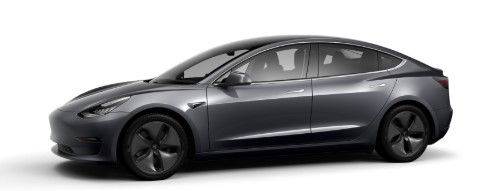

The car I’m driving today is better than the one I bought a year ago. No, I haven’t bought a new car – the Tesla Model 3 I bought in December 2018 has been upgraded several times through over-the-air software updates.
Of course, I knew that would happen. One of the main reasons I bought a Tesla – by far the most expensive car I’ve ever owned – is because of the promise it would get better over time. It’s not unlike smartphones and PCs that get better through software, even though the hardware remains that same.
Even my smart TV gets software updates, which is more than I can say for most cars on the road. In May, GM announced an over-the-air update platform to debut on the 2020 Cadillac CT5 sedan, with plans to be on most new GM vehicles by 2023. Ford is also rolling out an update platform.
I bought the Model 3 shortly after the company introduced Enhanced Auto Pilot which enabled it not only to stay in its lane and adjust its speed based on traffic, but to change lanes at the flick of a turn indicator. But, since I bought it, that feature (which is now called “Full Self Driving” or FSD) has gotten even more sophisticated. You no longer have to flick your turn indicator to change lanes. It does so if the car ahead of you is driving below your set-speed or if it needs to change lanes to stay on its route. It will even exit the highway or change highways automatically – features that didn’t exist when I bought the car.
This week Tesla improved lane changing so that it’s quicker and more decisive. They also added the ability to have the car automatically navigate to work or home depending on time of day.In March, Tesla extended the range of its long-range models from 310 to 325 miles, though many users report not getting a noticeable increase in range. The Standard Plus model’s range was originally advertised for 240 miles, but Tesla is now claiming 250 miles due to a software update. My 264 mile Mid-Range model didn’t get a range increase, but it is 5% faster than it was a few weeks ago, not that I needed a speed boost.
Last week, Tesla announced that “Automatic wipers have been improved to be more likely to activate when it is lightly raining … employing the first production deep neural network trained with over 1 million images for the detection of water droplets in a windshield and additional weather cues.”
Last year Consumer Reports gave the Model 3 bad marks for excessive braking distance. Rather than repair the brakes themselves, Tesla updated the software and improved breaking distance by 19 feet, which caused Consumer Reports to again recommend the car.
There have been several other changes over the last year, including the ability of the car to drive to you within a parking lot – a feature that I rarely use except when it’s raining and when I can see the car moving so I can abort the “drive to me” feature if it looks like there is the slightest chance it might hit something – even though its 12 cameras are looking for objects and people so it can apply the brakes automatically if necessary. I used it in a parking lot the other day and a police officer, who was parked nearby, came up to me to ask what was going on. He couldn’t figure out how the car was moving without anyone in it. I told him about advanced summon and explained that it currently only works on private property.
I wonder who he would have given a ticket to if the car broke a traffic law and the driver wasn’t in sight.
A few weeks ago, a software update improved how it slows down for a light or stop sign and automatically engages the “hold” feature which locks the brakes while you’re stopped so you don’t have to press the brake peddle. As soon as you touch the accelerator, the brake releases automatically.
Tesla CEO Elon Musk has promised more updates, including one that will make the car fully autonomous – at least with some driver supervision by the end of this year. I would be shocked if they make that deadline, but the company is aggressively moving in that direction. When it comes to full autonomy, Tesla needs more than good engineering – it needs regulatory approval, which may be pretty hard to pull off in the near future.
There are some potential downsides to over-the-air updates. For one thing, any software update can introduce new bugs. There have been complaints about things going wrong after an update include reduced range, slower performance and other problems. A bigger worry is hacks and malicious software that could have horrible consequences. There needs to be robust protections, including encrypted updates that will only work if they’re “signed” by Tesla.
While my car is far from perfect, it’s nice to have it improve with age, just like a fine wine. And someday — when the car truly is fully autonomous, it might be possible to legally enjoy a glass of fine wine from inside the car as its cameras, sensors and software drive you safely to your destination.